513. Once again. It could be calculated that the
precession had carried the cardinal points of the
Sun 80 days (= March 21) earlier since the time
of the Bull. 80 * 71 = 5680 = AD 1842 + 3838 BC.

However, from Hyadum II (δ
Tauri) to Sirrah (α Andromedae) there
are
only 64 right ascension days. The difference, 80 -
64 = 16 days, can be explained as due to the fact that in modern
times we count from the true position where the
Sun reaches a specific star, whereas at the time of
the Bull they counted from the day when the star
reappeared again after having been at the Sun (who
advanced ahead on his path of the year as defined
from the positions of the fixed stars).
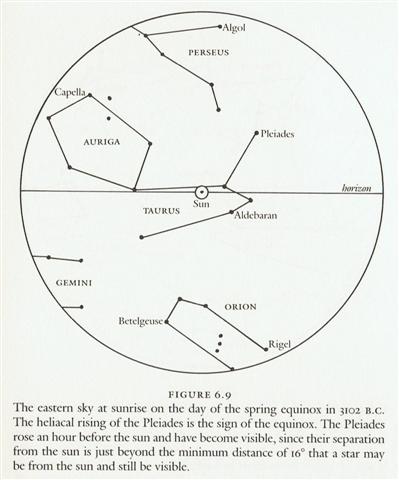
The sky dome in the night slowly
revolves to complete a circle in 24 hours and in
some day a star would eventually arrive so close to
the rays from the rising Sun as to be invisbile.
There are 360º in a
circle and I have counted with 365¼ right ascension
days - the normal Julian year - instead of 24 right ascension hours,
and therefore 16º equals 365¼ / 360 * 16 = ca 16.2
and approximately 16 of my right ascension days.
Also the creators of Manuscript E
waited for the stars to reappear, presumably like those
masters who had incised glyphs on the rongorongo
tablets, where for instance we can count 364 - 16 = 348
in order to reach the number of glyphs on
side b of the C tablet.
| CLOSE TO THE SUN: |
| Dec 11 |
12 (346) |
13 (LUCIA) |
|
... Obviously this time of the year must once have been a kind of 'candlemas'. Precession makes the dates of celebration move earlier and earlier, and according to the Julian calendar December 13 was the darkest day in the year. Thus the day of Lucia (who has a crown of candles in her hair) is expressing the same idea as Candlemas. No wonder people in the street here in Sweden had no explanation for Kyndelsmäss - in Sweden the candles are instead kindled 12 days before Christmas Day ...
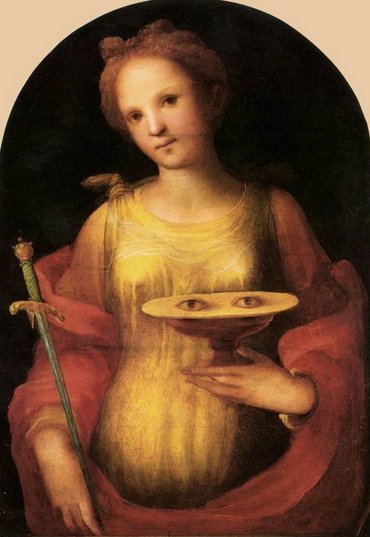
|
| 'Nov 14 (*265 - 27 - 4 = ☼234) |
15 (319 - 84 = ☼235 = *266 - 31) |
16 (320 = 347 - 27 = ☼8 * 29½ + 84) |
 |
 |
 |
| ko te maro - ko te tagata |
kua hua te tagata |
ko te tagata |
| Cb3-7 (448 = 234 + 214) |
Cb3-8 (57) |
Cb3-9 |
|
Al Shaula-17
ALWAID (Mother Camels) = β Draconis, MAASYM (Wrist) = λ Herculis (265.1), SHAULA (Sting) = λ Scorpii (265.3), KUMA = ν Draconis (265.6), σ Arae (265.9)
HAMAL (α ARIETIS) |
RAS ALHAGUE = α Ophiuchi (266.1), SARGAS = θ Scorpii (266.3), μ Ophiuchi, π Arae (266.5), NAN HAE (Southern Sea) = ξ Serpentis (266.6), AL DHĪLI (The Wolf) = ω Draconis, ι Herculis (266.7) |
λ Arae (267.1), GIRTAB (Seizer) = κ Scorpii, ο Serpentis (267.6), DSIBAN (Wolf Pair) = ψ Draconis (267.9) |
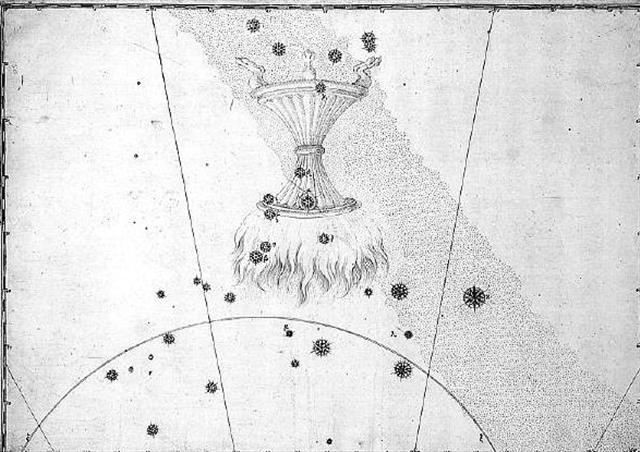 |
| CLOSE TO THE FULL MOON: |
|
HE MARO 27 |
28 |
29 (180 = 164 + 16) |
|
June 11
MINTAKA (Belt) = δ Orionis, υ Orionis (82.4), χ Aurigae (82.5), ε Columbae (82.6)
*41.0 = *82.4 - *41.4 |
12 (528 = 365 + 163)
Al Hak'ah-3 (Brand) / Mrigashīrsha-5 (Stag's Head) / Turtle Head-20 (Monkey) / Mas-tab-ba-tur-tur (Little Twins)
ARNEB = α Leporis, Crab Nebula = M1 Tauri (83.0, φ¹ Orionis (83.1), HEKA = λ Orionis, Orion Nebula = M42 (83.2), φ² Orionis (83.6), ALNILAM (String of Pearls) = ε Orionis (83.7) |
13 (164)
Three Stars-21 (Gibbon) / Shur-narkabti-sha-shūtū-6 (Star in the Bull towards the south) / ANA-IVA-9 (Pillar of exit)
HEAVENLY GATE = ζ Tauri, ν Columbae (84.0), ω Orionis (84.2), ALNITAK (Girdle) = ζ Orionis, PHAKT (Phaet) = α Columbae (84.7) |
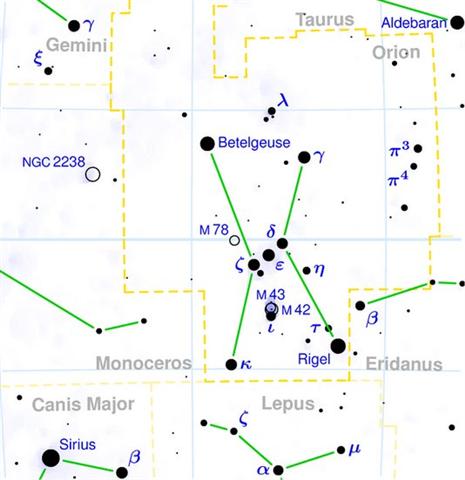 |
| 'May 15 (365 + 135 = 500) |
16 (136) |
17 |
| DAY 82 |
83 |
84 = 265 - 181 |
 |
| CLOSE TO THE SUN: |
| Dec 14 (348) |
15 |
16 (350) |
| 'Nov 17 (321 = 348 - 27) |
18 (322) |
19 |
 |
 |
 |
| te taketake |
henua |
kiore - henua |
|
... The specific epithet taketake is Māori for long established, ancient, or original ... |
| Cb3-10 |
Cb3-11 (60) |
Cb3-12 |
| KELB ALRAI (Dog of the Shepherd) = β Ophiuchi, μ Arae (268.1), KEW HO (Nine Rivers) = μ Herculis (268.6), η Pavonis (268.7), APOLLYON = ι Scorpii (268.9) |
MULIPHEN (Oaths) = γ Ophiuchi (269.0), BASANISMUS = G Scorpii (269.5), PHERKARD (Dim One of the Two Calves) = δ Ursae Minoris (269.9) |
PTOLEMY CLUSTER = M7 Scorpii (270.5), GRUMIUM (Lower Jaw) = ξ Draconis (270.9) |
 |
| CLOSE TO THE FULL MOON: |
| HE MARO 30 (181) |
HE ANAKENA 1 |
2 (167 + 16 = 183) |
| June 14 (165 = 348 - 183) ο Aurigae (85.8), γ Leporis (85.9)
YANG MUN (α Lupi) |
15 μ Columbae, SAIPH (Sword) = κ Orionis (86.5), τ Aurigae, ζ Leporis (86.6) |
16 (365 + 167 = 532) υ Aurigae (87.1), ν Aurigae (87.2), WEZN (Weight) = β Columbae, δ Leporis (87.7), TZE (Son) = λ Columbae (87.9) |
| 'May 18 |
19 (79 + 60 = 139) |
20 (140 = 323 - 183) |
| DAY 85 = 165 - 80 |
86 |
87 |
| CLOSE TO THE SUN: |
| Dec 17 |
18 (352) |
19 |
| 'Nov 20 |
21 (325) |
22 (242 + 84 = 326) |
 |
 |
 |
| manu rere |
tagata - hanau hia |
kiore - henua |
|
Hia. How many? Ka hia? Which one? Te hia? (Teach Yourself Maori) |
| Cb3-13 (454) |
Cb3-14 (63) |
Cb3-15 |
| RUKBALGETHI GENUBI (Bending Claw) = θ Herculis (271.1), ξ Herculis (271.5), ETAMIN (Head) = γ Draconis, ν Herculis (271.7), ν Ophiuchi (271.8) |
Cat's Eye = NGC6543 Draconis (272.2), ζ Serpentis (272.4), τ Ophiuchi (272.9)
*231.0 = *272.4 - *41.4 |
Winnowing Basket-7 (Leopard)
18h (273.4)
NASH (Point) = γ Sagittarii (273.7), θ Arae (273.8) |
 ... As has already been mentioned, the Delphians worshipped Dionysus once a year as the new-born child, Liknites, 'the Child in the Harvest Basket', which was a shovel-shaped basket of rush and osier used as a harvest basket, a cradle, a manger, and a winnowing-fan for tossing the grain up into the air against the wind, to separate it from the chaff. The worship of the Divine Child was established in Minoan Crete, its most famous early home in Europe. In 1903, on the site of the temple of Dictaean Zeues - the Zeus who was yearly born in Rhea's cave at Dicte near Cnossos, where Pythagoras spent 'thrice nine hallowed days' of his initiation - was found a Greek hymn which seems to preserve the original Minoan formula in which the gypsum-powdered, sword-dancing Curetes, or tutors, saluted the Child at his birthday feast. In it he is hailed as 'the Cronian one' who comes yearly to Dicte mounted on a sow and escorted by a spirit-throng, and begged for peace and plenty as a reward for their joyful leaps ... |
| CLOSE TO THE FULL MOON: |
| HE ANAKENA 3 |
4 (185 = 169 + 16) |
5 |
| June 17 (168) Ardra-6 (The Moist One) / ANA-VARU-8 (Pillar to sit by)
χ¹ Orionis, ξ Aurigae (88.1), BETELGEUZE = α Orionis (88.3), ξ Columbae (88.5), σ Columbae (88.7)
ZUBEN ELGENUBI (α Librae) |
18 η Leporis (89.0), PRAJA-PĀTI (Lord of Created Beings) = δ Aurigae, MENKALINAN (Shoulder of the Rein-holder) = β Aurigae, MAHASHIM (Wrist) = θ Aurigae, and γ Columbae (89.3), π Aurigae (89.4), η Columbae (89.7)
*48.0 = *89.4 - *41.4 |
19 (535 = 365 + 170) μ Orionis (90.3), χ² Orionis (90.5) |
| 'May 21 |
22 (142) |
23 |
| DAY 88 = 168 - 80 |
89 |
90 |
 |
 |
 |
 |
 |
 |
| henua kua hoi |
kua ka te ahi o te henua |
o te henua kua hoi |
ko te henua kua vero te ahi |
kiore - henua |
| Cb3-16 |
Cb3-17 (66 = 30 + 36) |
Cb3-18 |
Cb3-19 (460 = 392 + 68) |
Cb3-20 |
| CLOSE TO THE SUN: |
| Dec 20 (354 = 12 * 29½)
Zhōngshān (274.0), π Pavonis (274.6) |
Solstice
ι Pavonis (275.1), POLIS = μ Sagittarii (275.9)
MENKAR (α Ceti) |
22
η Sagittarii (276.9) |
Purva Ashadha-20 (Winnowing Basket) |
| 23
KAUS MEDIUS = δ Sagittarii, κ Lyrae (277.5), TUNG HAE (Heavenly Eastern Sea) = η Serpentis (277.7), SHAOU PIH (Minor Minister) = φ Draconis (277.8), KWEI SHE = χ Draconis (277.9) |
CHRISTMAS EVE
φ Oct. (278.1), KAUS AUSTRALIS = ε Sagittarii (278.3), ξ Pavonis (278.4), AL ATHFAR (The Talons of the Falling Eagle) = μ Lyrae (278.6)
*237.0 = *278.4 - *41.4 |
|
... That the Sun-gods Dionysus, Apollo and Mithras were all also reputedly born at the Winter solstice is well known, and the Christian Church first fixed the Nativity feast of Jesus Christ at the same season, in the year AD 273 (= 3 * 91). St. Chrysostom, a century later, said that the intention was that 'while the heathen were busied with their profane rites the Christians might perform their holy ones without disturbance', but justified the date as suitable for one who was 'the Sun of Righteousness' ...
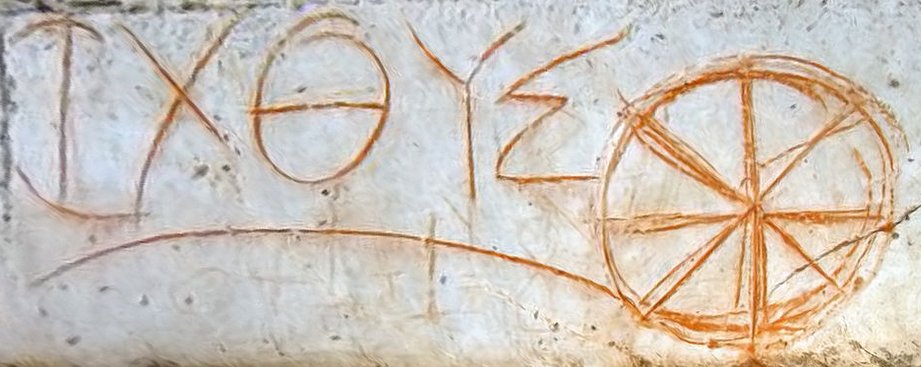
|
| 'Nov 23 (354 - 27 = 327) |
24 |
25 (329 = 146 + 183) |
26 |
27 |
| "Nov 9 (354 - 41 = 313) |
→ π |
11 |
12 |
13 |
| OCT 17 |
18 (291 = 355 - 64) |
19 |
20 |
21 |
| CLOSE TO THE FULL MOON: |
| HE ANAKENA 6 |
7 (204 - 16 = 188) |
8 |
9 |
10 (175 + 16 = 191) |
| June 20 (171)
6h (91.3)
ν Orionis (91.4), θ Columbae (91.5), π Columbae (91.6)
*50.0 = *91.4 - *41.4 |
Solstice
ξ Orionis (92.5) |
22
Al Han'ah-4 (Brand) / Maru-sha-pu-u-mash-mashu-7 (Front of the Mouth of the Twins)
TEJAT PRIOR = η Gemini (93.4), γ Monocerotis (93.5), κ Aurigae (93.6), κ Columbae (93.8)
*52.0 = *93.4 - *41.4 |
23
FURUD = ζ Canis Majoris (94.9) |
DAY OF ST JOHN
Well-22 (Tapir) / Arkū-sha-pu-u-mash-mashu-8 (Back of the Mouth of the Twins)
δ Columbae (95.2), TEJAT POSTERIOR = μ Gemini, MIRZAM (The Roarer) = β Canis Majoris (95.4), CANOPUS (Canopy) = α Carinae (95.6), ε Monocerotis (95.7), ψ1 Aurigae (95.9)
*54.0 = *95.4 - *41.4 |
|
... The evening of 23 June, St. John's Eve, is the eve of celebration before the Feast Day of Saint John the Baptist. The Gospel of Luke (Luke 1:36, 56-57) states that John was born about six months before Jesus; therefore, the feast of John the Baptist was fixed on 24 June, six months before Christmas Eve ... |
| 'May 24 |
25 |
26 (146 = 173 - 27) |
27 |
28 |
| "April 30 (130) |
"May 1 |
2 |
3 |
4 |
| APRIL 17 |
18 (108 = 172 - 64) |
19 |
20 |
21 |
| DAY 91 |
92 |
93 |
94 |
95 |
 ... The Pythagoreans make Phaeton fall into Eridanus, burning part of its water, and glowing still at the time when the Argonauts passed by. Ovid stated that since the fall the Nile hides its sources. Rigveda 9.73.3 says that the Great Varuna has hidden the ocean. The Mahabharata tells in its own style why the 'heavenly Ganga' had to be brought down. At the end of the Golden Age (Krita Yuga) a class of Asura who had fought against the 'gods' hid themselves in the ocean where the gods could not reach them, and planned to overthrow the government. So the gods implored Agastya (Canopus, alpha Carinae = Eridu) for help. The great Rishi did as he was bidden, drank up the water of the ocean, and thus laid bare the enemies, who were then slain by the gods. But now, there was no ocean anymore! Implored by the gods to fill the sea again, the Holy One replied: 'That water in sooth hath been digested by me. Some other expedient, therefore, must be thought of by you, if ye desire to make endeavour to fill the ocean ...
... Canopy ... covering over a throne, etc. XIV (Wycl.). Late ME. canope, canape - medL. canopeum baldacchino, for L. cōnōpēum, -eum, -ium net over a bed, pavilion - Gr. kōnōpeîon Egyptian bed with mosquito curtains, f. kōnōps gnat, mosquito ... |
|
9 |
CLOSE TO THE SUN: |
|
Jan 3 |
4 |
5 (370) |
6 |
7 |
|
'Dec 7 |
8 |
9 |
10 |
11 (345) |
 |
 |
 |
 |
 |
|
manu
mau kai - rere ki te kai
- ka kake ki te kai -
hakavari te gao o te
manu - * ausgestrichen:
manu rere ki te hau tea |
kiore
henua |
|
Cb4-8 (392 + 79 = 471) |
Cb4-9 (80) |
Cb4-10 (420 + 53) |
Cb4-11 (58 + 24) |
Cb4-12 |
|
Al Na'ām-18 (Ostriches)
/
Uttara Ashadha-21
(Elephant tusk, small
bed)
NUNKI = σ Sagittarii
(288.4), ζ Cor. Austr.
(288.5),
MANUBRIUM = ο Sagittarii
(288.8), ζ Aquilae
(288.9)
*247.0 = *288.4 - *41.4 |
19h (289.2)
λ
Aquilae (Ant.) (289.1),
γ
Cor. Austr (289.3),
τ
Sagittarii (289.4),
ι
Lyrae (289.5),
δ
Cor.
Austr. (289.8)
*248.0 = *289.4 - *41.4 |
Al Baldah-19 (City)
AL BALDAH
= π Sagittarii,
ALPHEKKA (Dish)
MERIDIANA = α Cor.
Austr.
(290.1), β Cor. Austr.
(290.2) |
ALADFAR = η Lyrae
(291.1),
NODUS II = δ Draconis
(291.5), ψ Sagittarii
(291.6), τ Draconis
(291.7), θ Lyrae (291.8) |
ω Aquilae (292.1), ρ
Sagittarii (292.6), υ
Sagittarii (292.7) |
|
... This [σ
Sagittarii] has been
identified with Nunki
of the Euphratean
Tablet of the Thirty
Stars, the Star of
the Proclamation of the
Sea, this Sea
being the quarter
occupied by Aquarius,
Capricornus, Delphinus,
Pisces, and Pisces
Australis. It is the
same space in the sky
that Aratos designated
as Water ... |
|
CLOSE TO THE FULL MOON: |
|
HE ANAKENA 20 |
21 |
22 |
23 (204 = 188 + 16) |
24 |
|
July 4 (185 = 168 + 17)
ω Gemini (105.4),
ALZIRR (Button) = ξ
Gemini
(105.7),
MULIPHEIN (Oaths) = γ
Canis Majoris
(105.8),
MEKBUDA (Contracted) = ζ
Gemini
(105.9)
*64.0 = *105.4 - *41.4 |
5
7h (106.5)
no star listed (106) |
6
WEZEN
(Weight) =
δ
Canis Majoris
(107.1),
τ
Gemini (107.7),
δ
Monocerotis (107.9) |
7 (365 + 188 = 553)
no star listed (108) |
8
λ Gemini (109.4),
WASAT
(Middle) = δ Gemini
(109.8)
*68.0 = *109.4 - *41.4 |
|
'June 7 |
8 |
9 (525 = 365 + 160) |
10 (161) |
11 |
|
DAY 105 |
106 |
107 |
108 |
109 |
|
E:26 |
|
i te
rua te
kauatu
matoru
raa o te
ana(-) |
On
the
twenty-third
day of
the
month of
July
('Ana- |
|
kena
i oho
mai ai
ki rangi
meamea.he |
kena'),
they
reached
Rangi
Meamea.
When |
|
tuu
he ui he
tikea he
nape i
te
ingoa.ko
ra(-) |
they
arrived
there,
they
looked
around
and gave
the name
'Ra- |
|
ngi
meamea.a
hau
maka.he
nape
tokoa |
ngi
Meamea A
Hau
Maka'.
They
also
named |
|
i te
ingoa o
te
maunga
ko peke
tau o
hiti |
the
mountain
'Peke
Tau O
Hiti
|
|
a hau
maka.he
vari mai
ki te
rua
painga |
[A]
Hau
Maka'.
They
went
around
to the
other
side |
|
o
maunga
hau
epa.he
tikea.he
nape i
te |
of the
mountain
Hau Epa,
looked
around,
and gave
the |
|
ingoa
ko
maunga
hau epa.
a Hau
maka. |
name
'Hau Epa
A Hau
Maka'. |
|
he
vari
hokoou
mai ki
te rua
painga o
maunga
hau epa. |
This part
of the text was not
translated
by
Barthel.
However
we can
give a
try:
They
went
dancing
(hoko)
around
to the
other
side of
the
mountain
Hau Epa. |
|
Lower
third of
the page
cut off,
in the
same way
as the
lower
third of
page
E:25. |
|
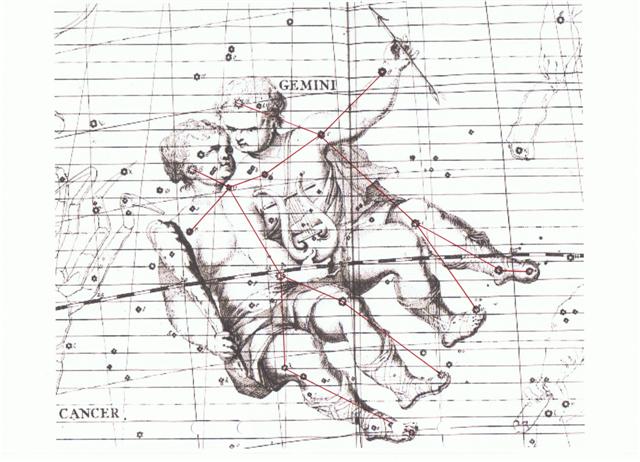
|





























